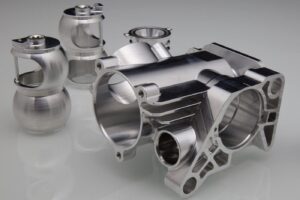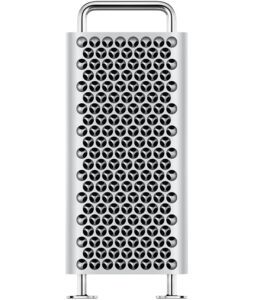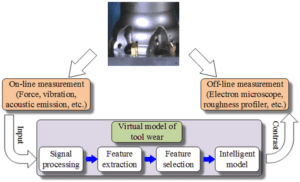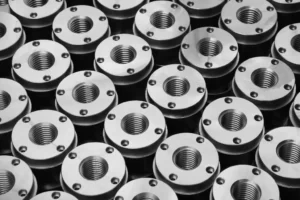“The manufacturing industry has witnessed significant transformations over the years, and CNC milling lies at the center of these innovations. This is because there are unlimited benefits of CNC milling, such as accuracy, cost-effectiveness, lead time, and more.”

The benefits of CNC milling are pushing the manufacturing industry, ensuring unparalleled precision and efficiency in production processes. A recent survey highlighted that enterprises adopting CNC milling witnessed a staggering 30% increase in production speed. Furthermore, the accuracy of CNC technology has led to a notable 40% reduction in material wastage. The automated guidance system of CNC milling allows the production of consistent geometries to the highest standard. As markets become increasingly competitive, the precision and reliability offered by CNC milling position it as the ideal choice for modern manufacturers. This article presents the six benefits of CNC milling and aims to discuss its significant impact on modern manufacturing.
1. Precision and Accuracy Benefit of CNC Milling
CNC milling symbolizes the epitome of precision and accuracy in the machinery world. A fusion of state-of-the-art technology and advanced engineering principles, CNC milling machines consistently produce results that are not just accurate, but exact down to the minutest measurements.
Eliminating Human Error

Automatic CNC milling for thread creation
The traditional manual machining process, while effective, is susceptible to a range of human errors. Factors such as fatigue, oversight, and even a momentary lapse in concentration can lead to significant discrepancies in the final product. However, the advent of CNC milling, with its computerized controls, has dramatically reduced these discrepancies.
Table: Precision Comparison of CNC and Manual Milling
| Aspect | Manual Milling | CNC Milling |
|---|---|---|
| Average Tolerance (in mm) | ±0.05 | ±0.004 |
| Time for Complex Design (h) | 5-8 | 1-3 |
| Error Rate (%) | 5 | <1 |
| Design Flexibility | Moderate | High |
The key lies in the mechanized brilliance of computerized controls. By relying on CNC programming ( G-code & M-code instructions), these machines operate with a degree of precision that is virtually unmatched. Human errors, which once were an inevitable part of the manual machining process, are now a concern of the past.
The following are the outcomes of reducing human error in milling;
- Consistency: Uniformity across multiple products or parts.
- Efficiency: Less time spent correcting mistakes ensures faster production.
- Cost-effective: Reduced wastage and fewer reworks translate to monetary savings.
- Reproducibility: Ability to produce identical parts over prolonged periods.
- Customer Satisfaction: Delivering high-quality products boosts client trust.
Tolerances in CNC Milling
Precision is a hallmark of CNC milling, making it the go-to choice for industries requiring impeccable tolerances. While the exact tolerances achievable can vary depending on the specific machine, material, and operating conditions, the following table provides an overview of typical CNC milling tolerances under various scenarios.
Table: CNC Milling Tolerances
| Scenario | Typical Tolerance (in mm) |
|---|---|
| General Machining | ±0.025 |
| Fine machining | ±0.0125 |
| Precision machining | ±0.005 |
| Ultra-precision machining | ±0.0025 |
Source: Journal of Materials Processing Technology
(Note: “These values serve as general guidelines. Actual tolerances can vary based on machine capability, tool wear, material properties, and other factors. It’s always advisable to consult directly with CNC service providers for precise tolerance values for specific projects.” )
2. Creation of Complex Parts and Products
CNC milling can create some of the most intricate and complex geometries that other traditional methods might find challenging with its precision and adaptability.

Complex & precise CNC milled part
The advanced CNC machines can work in multiple axes simultaneously (often five or more), allowing the tool to approach the workpiece from virtually any angle. This capability is pivotal for crafting intricate geometries and detailed contours that are impossible with traditional 3-axis machines.
- Seamless Integration with Design Software
The true power of CNC milling in creating complex parts is unleashed when paired with advanced design software such as CAD, CAM. and more. Modern CNC milling machines can integrate directly with CAD (Computer-Aided Design) tools. This integration means complex digital designs can directly translate into real-world parts without losing detail.
- Simulation and Prototyping
The design can be simulated before the actual milling begins to identify potential issues. This preemptive measure ensures that the produced parts are accurate to the original design.
Example of CNC-milled Complex Parts
Let’s look at a real-world example. The Apple Mac Pro’s computer chassis, dubbed the “cheese grater” design, showcases a lattice structure that involves intricate milling to produce a uniform yet complex pattern for heat management and aesthetics. The precision and repeatability of CNC milling ensured that each chassis met the exacting standards set by Apple, reflecting both functionality and design elegance.

CNC-milled Mac Pro’s computer chassis
Here are some more examples of complex parts geometry produced using CNC milling
Table: Example of CNC-milled Complex Part
| Example of a complex part | Description |
|---|---|
| Turbine Blades | It is used in jet engines and power generation turbines; these blades have intricate airfoil geometries that must be produced with high precision to ensure optimal performance—every curve, twist, and angle matters. |
| Medical Implants | Complex orthopedic implants like joint replacements, spinal elements, and dental implants have unique geometries tailored to fit individual patients or meet specific medical requirements. |
| Automotive Molds | The molds used to create car parts, especially for luxury or sports cars, can have complicated geometries to ensure aerodynamics, aesthetics, and performance. |
| Watch Components | High-end watches, mainly mechanical, contain tiny components with intricate designs that must be milled with extreme precision. |
3. Efficiency and Speed Advantage of CNC Milling
CNC milling delivers both speed and efficiency, setting standards for production processes. The following are the critical attributes of milling speed and time. Experimental research on the efficiency of CNC milling machines shows;
“The performance efficiency of the CNC milling machine is≥ 95%, and the rate of quality is ≥ 99%. “
- Multi-axis Movement: Enter multi-axis CNC milling machines. These marvels of engineering can operate on five or even more axes simultaneously. The ability to move in multiple directions at once allows for efficient material removal and significantly shortening production times.
- Reduced Tool Changeover Time: The CNC milling machine can switch between tools seamlessly without manual intervention. This eliminates substantial downtime and ensures that production runs smoothly with minimal interruptions.
- Continuous Operation: A vital benefit of automatic tool changeover is the ability of the machine to operate continuously. For instance, if a particular component requires drilling, followed by detailed carving, the CNC machine can seamlessly switch between a drill bit and a carving tool.
- Intricate Designs in Fewer Steps: With simultaneous multi-axis movement, what previously required multiple setups and adjustments can now be accomplished in a single form. The machine can pivot, rotate, and approach the material from different angles, allowing intricate designs to be carved out in fewer steps, thus saving time.
- Reduced Manual Intervention: The need for operators to reposition the workpiece is minimized, if not eliminated, in multi-axis CNC milling. The machine’s advanced movements ensure it can access even the most challenging parts of the material, ensuring smooth production without manual intervention.
- Enhanced Productivity: The less time a machine spends idle, the higher its output. By drastically reducing the time taken for tool changeovers, CNC milling machines can produce more in the same time frame than their traditional counterparts. This heightened productivity not only meets the increasing demands of consumers but also allows manufacturers to take on larger orders with confidence.
For a better illustration of how CNC milling enhances efficiency & production speed, consider a global automobile manufacturer that previously relied on traditional & other machining methods.
The time spent on manual tool changeovers was almost 7 hours per week. After transitioning to CNC milling machines with automatic tool changeovers, this downtime was reduced to just 1 hour per week. Over a year, this difference translated to additional production time equivalent to almost two weeks, leading to a significant boost in the number of parts produced and a corresponding increase in profits.
Click here to download CNC milling machines and their capabilities(3, 4, & 5 axes)
Try Prolean Now!
4. Versatility in Material Options
Among the numerous attributes of CNC milling, its versatility in material options stands out prominently. Its compatibility with diverse materials transforms production lines, allowing manufacturers to expand their horizons and quickly meet multifaceted demands.
Broad Spectrum of Materials
Historically, different machining tools were earmarked for specific materials. However, CNC milling machines can handle diverse materials, ranging from the softest plastics to the hardest metals.
Table: CNC Milling Materials
| CNC Milling Material Category | Description | Examples |
|---|---|---|
| Metals | CNC machines can carve, shape, and detail various metals with precision. | Aluminum, Brass, Copper, Titanium, Stainless Steel, Bronze, Zinc, Nickel, Tungsten, Magnesium, Gold, Silver |
| Plastics and Polymers | CNC milling is proficient with diverse plastics, from standard to specialized variants. | ABS, PTFE, Polycarbonate, Polypropylene, Acrylic, Polyethylene, Nylon, PVC, PEEK, Polystyrene, PET |
| Composites | Composite materials, appreciated for their strength-to-weight ratio, can be milled without splintering. | Carbon Fiber Reinforced Plastics (CFRP), Fiberglass, Kevlar-Reinforced Plastic, Boron-Reinforced, Graphite Composite, Flax-Reinforced, Basalt Fiber Reinforced, Aramid (e.g., Twaron), Hybrid Composites, Glass-Reinforced Plastic (GRP) |
| Ceramics and Hardened Materials | Advanced CNC milling handles hard materials that are typically challenging due to their brittle nature. | Zirconia, Silicon Carbide, Alumina, Silicon Nitride, Porcelain, Steatite, Cordierite, Mullite, Boron Carbide |
Adaptable Tooling Mechanisms for Material Diversity

Tool wear monitoring mechanism
CNC milling machines are versatile in terms of the materials they can handle and the variety of tooling mechanisms they accommodate. These machines are adaptable powerhouses, from drills and lathes to more specialized tools designed for intricate detailing or specific materials.
- Customized Tool Options: Customized tools can be easily integrated into the CNC milling setup for unique materials or specialized applications, ensuring the machine can handle any material optimally.
- Tool Wear Monitoring: Given the diverse range of materials, each with unique hardness and properties, CNC machines often come with tool wear monitoring. This feature ensures that tools remain sharp and effective, maintaining consistent quality, regardless of the material being processed.
5. Cost-effective Manufacturing with CNC Milling
In a competitive global market, production efficiency isn’t the only crucial factor for businesses. Cost cost-effectiveness is another pivotal aspect that can make or break an enterprise’s success. CNC milling is increasingly becoming synonymous with cost-effective production, providing substantial economic benefits over traditional methods. Let’s delve deeper into how CNC milling has reshaped the cost structures in manufacturing industries.
- Minimized Material Wastage
Traditional manual milling, though effective, can lead to material wastage due to errors in measurements, misalignments, or even simple human error. In contrast, CNC milling, with its computerized precision, ensures minimal wastage.
- Precision Cuts: CNC machines operate based on exact coordinates, ensuring every cut is where it needs to be.
- Reduced Errors: Automated operations significantly reduce the potential for costly human errors.
- Consistent Output: Unlike manual operations, which can vary, CNC milling provides consistent results every time, further minimizing wastage.
- Streamlined Labor Costs
Labor constitutes a significant portion of manufacturing costs. With their automated capabilities, CNC milling machines can efficiently reduce these expenses. A single individual can oversee multiple CNC machines simultaneously. Operating CNC machines often require less extensive training than mastering manual machinery. Automated processes reduce dependence on specialized labor, further bringing down costs.
- Energy Efficiency
Modern CNC milling machines are designed with energy efficiency in mind. They tend to consume less power compared to older models and some traditional machines, leading to notable savings in energy costs.
Table: Comparison of Energy Consumption
| Machine Type | Average Energy Consumption (per hour) |
|---|---|
| Traditional Milling Machine | 8 kWh |
| Modern CNC Milling Machine | 5 kWh |
6. Consistent Reproducibility

Identical CNC milled parts with consistent quality
Reproducibility has always been at the forefront of manufacturing concerns, especially in industries where uniformity and consistency across products are vital. A slight specification deviation can have significant implications, from product recalls to potential safety hazards. This is where CNC milling has become invaluable, promising consistent reproducibility and setting it apart from traditional manufacturing methods.
- Precision in Repeated Tasks
One of the inherent strengths of CNC milling machines is their unmatched ability to execute repeated tasks with incredible precision. This machinery thrives on automated consistency, ensuring the same design can be reproduced flawlessly numerous times without deviation once programmed.
This precision starkly contrasts with manual processes, which often introduce variability. Such methods depend on human skills, which can vary, mainly when influenced by factors like fatigue. Additionally, CNC machines have the distinctive advantage of retaining optimal settings. Each production run will maintain consistent quality and specifications even if spaced months apart.
- Enhanced Quality Control
Consistent reproducibility plays a pivotal role in enhancing quality control. When products maintain consistency, it inherently streamlines quality checks. This means manufacturers can establish and rely on predictable quality benchmarks. Such predictability optimizes quality control processes, enabling quicker identification of anomalies. Moreover, maintaining a consistent manufacturing process reduces product rejections or reworks, enhancing cost efficiency.
- Meeting Industry Standards
Various industries, especially aerospace, automotive, and medical, adhere to stringent standards regarding product consistency. For such sectors, any variability could lead to severe consequences.
CNC milling, recognized for its reproducibility, ensures products consistently meet set industry regulations. This is crucial, especially in high-stakes industries such as aerospace and healthcare. Here, consistent reproducibility isn’t just about quality—it’s about safety.
How can small businesses leverage the benefits of CNC milling?
For small businesses, navigating the competitive landscape requires a combination of innovation, efficiency, and cost-effectiveness. One of the technologies that have been instrumental in leveling the playing field for small enterprises is CNC milling. Here’s how the advantages of CNC milling can provide a significant boost to small businesses:
Outsourcing as a Growth Strategy
Not every small business can invest upfront in advanced CNC milling machines. This is where the concept of outsourcing comes into play. Numerous CNC milling service providers cater specifically to the needs of small businesses. By outsourcing, businesses can:
- Access Advanced Machinery: Small businesses can leverage the capabilities of state-of-the-art CNC machines through outsourcing without the hefty investment in machinery.
- Flexibility: Outsourcing allows businesses to order precisely what they need when needed, avoiding the pitfalls of overproduction.
- Quality Assurance: Reputable CNC milling services often come with quality assurance, ensuring that products meet industry standards.
Summing Up
CNC milling brings many advantages, fundamentally reshaping precision manufacturing. It promises distinctive precision and speed, quickly adapting to various tasks. Moreover, its inherent cost-effectiveness makes it an invaluable asset, especially in a world where businesses constantly strive for efficiency.
As we move forward, it’s clear that CNC milling is central to manufacturing, guiding businesses towards more streamlined, productive futures. Prolean stands at the forefront of precise manufacturing, ensuring businesses stay competitive and thrive. Our commitment to cutting-edge technology and deep industry knowledge guarantees you the full benefits of CNC milling for your project.
As industries continuously evolve and the need for precise manufacturing becomes paramount, Prolean stands at the forefront, ensuring businesses stay competitive and thrive. Our commitment to cutting-edge technology and deep industry knowledge makes Prolean’s CNC milling services a beacon for businesses aiming for streamlined operations and exceptional product quality.
Read more: CNC Milling Techniques: Unlocking the Full Potential of Advanced Machining
FAQS
How does CNC milling differ from traditional milling?
CNC milling is automated and uses computer instructions, while traditional milling requires manual operation.
Are CNC milling machines suitable for all materials?
While they handle a broad range, some materials might be unsuitable. It’s best to check with the machine’s specifications.
How precise are CNC milling machines?
CNC milling machines can achieve tolerances as tight as 0.004mm.
Is CNC milling cost-effective for small-batch productions?
Yes, due to its precision and reduced wastage, it’s often cost-effective even for smaller runs.
Do CNC milling machines require frequent maintenance?
Regular maintenance is advised to ensure longevity and optimal performance.




As a electric bicycle startup, i found this article so valuable for me as i am using CNC milling services from china as a growth strategy. Please I am expecting more article related to CNC milling benefits & outsourcing as growth strategy, especially if you could focuses on bicycle parts that would be very nice!
Thank you for your feedback! We’re thrilled to hear that our content has been valuable for your electric bicycle startup. The potential of CNC milling, especially when sourced from cost-effective and quality-focused regions like China, can indeed be a game-changer for growing businesses.
Stay tuned, as we plan on diving deeper into the benefits of CNC milling and how it can be an integral part of an outsourcing growth strategy. We’ll make sure to include specific insights related to bicycle parts to tailor the content to businesses like yours.
Your input is much appreciated, and it helps us shape our future content to better serve our readers. Best of luck with your startup, and keep an eye out for more articles on this topic!
Would you like any additional information or assistance?
Great! What does it mean by error rate in CNC milling is < 1 ?
error rate in CNC milling is < 1 means there will be less than 1% defective pats that does not meet the intended precision.
Great to know that bead-blasting can be used as well for welding surface preparation. I have been practicing it for Non-Destructive Testing / Evaluation (NDT / NDE) for induction hardened parts.
I am irritated from tool wear defects during CNC milling. How your company is addressing that issues?
Marissa, that’s the common issues wit h CNC machining tools. We have real-time tool monitoring system integrated with AI Algorithm that automatically detects the tool wear and notify that’s is very beneficial in avoiding the quality sacrifice during CNC machining operations.